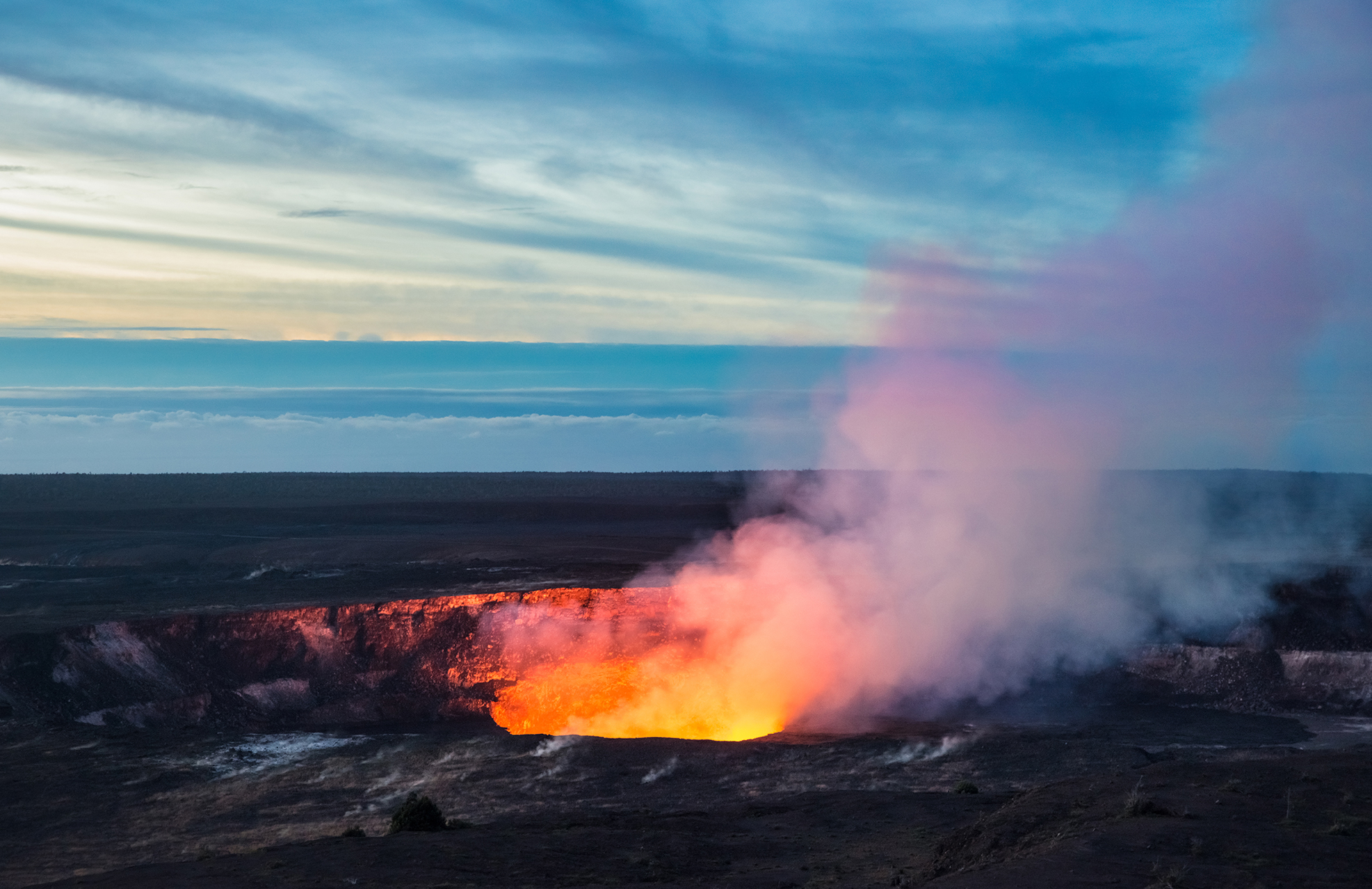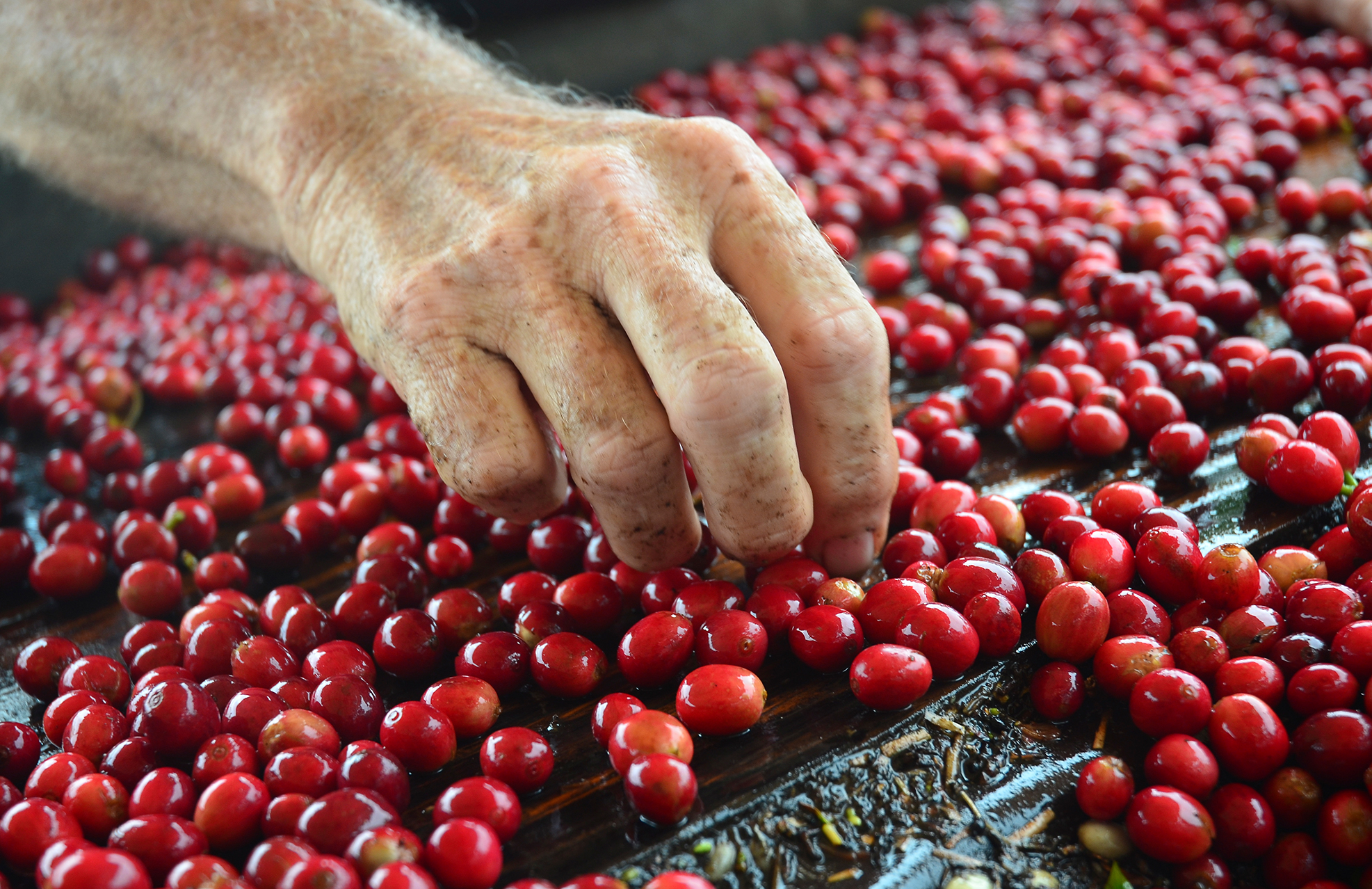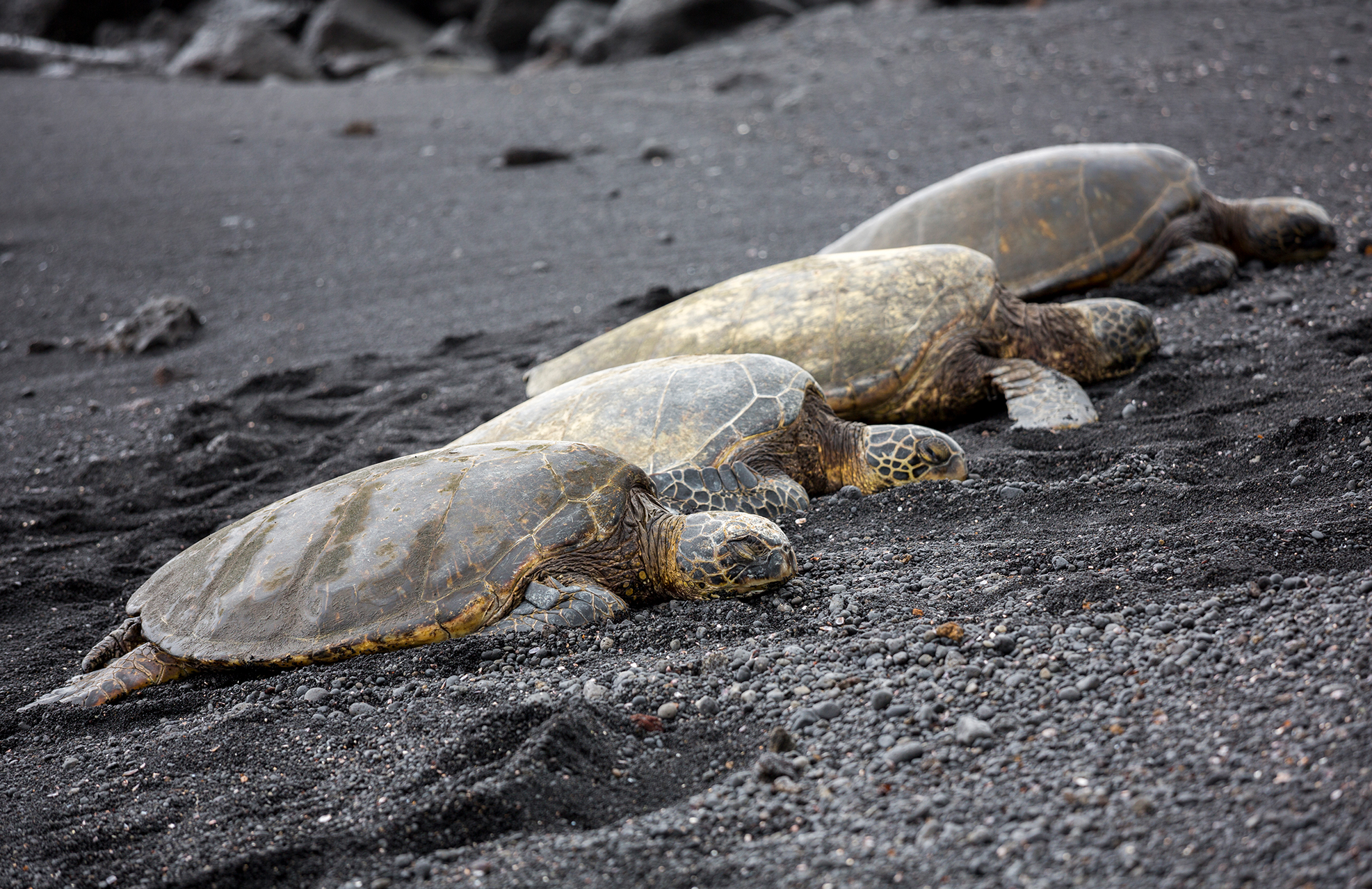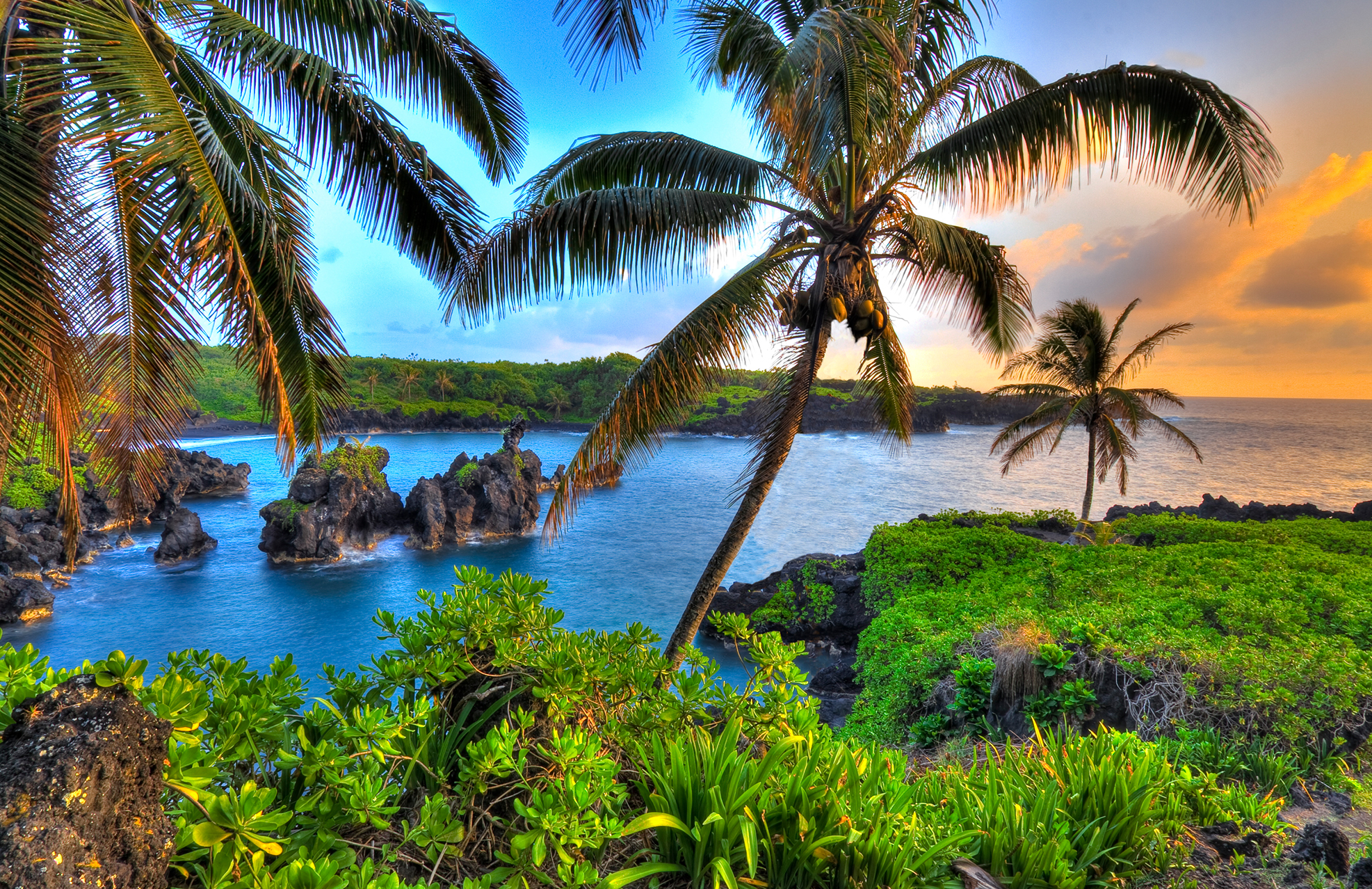Things to Do for a Romantic Couple’s Escape in Hawai’i
Big Island, Hawai‘i for Couples
The youngest and largest island in the Hawaiian chain, the Big Island is nearly three times the size of New York’s Long Island — providing ample space for sun-kissed adventures for two. Due in part to the varied elevation among the island’s five volcanoes, the Big Island encompasses nearly all the world’s climate zones. Remote and rugged, its terrain is as varied as its opportunities for exploration. From windswept valleys to jungle waterfalls, glowing lava lakes, and starry night skies, the Big Island offers the perfect retreat for couples to spend time away together — and away from it all.
Here’s your Hawaiian itinerary to experience the island’s highlights.
DAY 1: KONA BEACHES
Start your experience with beach time for two. Just a few miles north of Kona International Airport is Kekaha Kai State Park, a collection of secluded beaches and some of the island’s most scenic stretches of white sand.
As you follow the bumpy road through a lava flow deposited by adjacent Hualālai volcano in the early 19th century, you will find a shady, tree-backed stretch at Mahai‘ula Beach. You can also head down the mile-long path — part of the ancient stretch of the Ala Kahakai, or King’s Trail — through a lava desert to Makalawena Beach. The latter has become a local favorite for its crystal waters, uncrowded sands, and relaxed vibe.
For more beach adventures, head to Hāpuna Beach State Recreation Area, the site of the island’s longest sandy beach. While most of the coastline is jumbled lava rock, Hāpuna boasts an uninterrupted — nearly half-mile — sandy stretch and swimmable waters. You can stroll or swim to the far south side to a romantic and secluded mini beach, accessible at low tide when the water is calm.
When you’re ready to explore further, drive north through charming Hawi Town to sweeping Pololū Valley Lookout for late afternoon views. If there’s any rain that day, you may be able to spot silvery waterfalls streaming down valley walls facing the sea.
Cap off the day with cocktails and an incredible ocean sunset view at Lava Lava Beach Club. From your home base at Marriott’s Waikoloa Ocean Club, it’s just a short stroll down ‘Anaeho‘omalu Beach, which is popular with windsurfers and offers historic fishponds.


DAY 2: HAWAI‘I VOLCANOES NATIONAL PARK
The island’s biggest draw deserves a full day, particularly if your visit coincides with one of Kīlauea’s frequent eruptions. This volcano is among the world’s most active, so be sure to call ahead for current lava activity.
Pack a picnic lunch and head out via “Saddle Road” (State Route 200, Daniel Inouye Highway), which follows the lunar landscape of the high elevation foothills between the sacred volcanoes of Mauna Loa and Mauna Kea. Detour north along the Hāmākaua Coast to glimpse ‘Akaka Falls, which tumbles a jaw-dropping 442 feet into a forested gorge.
At Hawai‘i Volcanoes National Park, you can check out popular spots like Ha‘akulamanu (Sulphur Banks trail), where boardwalks navigate a field filled with otherworldly volcanic steam, and Nāhuku (Thurston Lava Tube), a tunnel carved by liquid lava some 500 years ago. Set up your picnic for two overlooking the Halema‘uma‘u crater rim near the visitors’ center. Then, if you’re up for a two-to three-hour hike, head down the Kilauea ‘Iki Trail through the native jungle to the bed of a former lava lake.
Complete your adventure with a drive down Chain of Craters Road, pulling off to take in evidence of old eruptions on your way to the sea. If there’s daylight left, follow the mile-long walking trail at the bottom of the road to the Pu‘u Loa Petroglyphs, a site containing some 23,000 rock carvings and impressions — the most extensive such surviving collection in Hawai‘i.
For a hearty meal, stop by the ‘Ōhelo Cafe in Volcano Village a short drive from park gates. The single-room eatery takes its name from the native berries that make appearances on the menu. To try the only-in-Hawai‘i berry’s cranberry-like tang, order the house salad with ‘Ōhelo berry balsamic citronette or the pork chop glazed with ‘Ōhelo berry gastrique.


DAY 3: COFFEE, BLACK SAND BEACH, HILO TOWN, AND STARS
Leave time to sample one of the Big Island’s most famous products: coffee. If you head south along the Kona Coast to coffee country, you’ll know you’ve arrived when the landscape transforms from lava desert to green jungle.
There are plenty of options for tastings and tours, such as historic Greenwell Farms or the biodynamic farm at Buddha’s Cup. Duly caffeinated, you can follow the lush coast past Ka Lae, the southernmost point in the United States, to the palm-backed Punalu‘u Black Sand Beach. This is where honu — Hawai‘i’s green sea turtles — regularly bask in the warm sand.
From this point, you can head farther toward Hilo Town to spend the day shopping its quaint downtown. Don’t miss Two Ladies Kitchen, whose famous house-made mochi regularly sells out, or The Locavore Store, showcasing farm-fresh food and gifts from around the Island. After a romantic dinner overlooking downtown and the ocean at Hilo Bay Cafe, head back to the Kona side via the Saddle Road.
The night is still young, and the stars are almost always out. The island’s high elevations regularly yield dry, clear nights, making it one of the world’s hot spots for serious astronomy. Turn off at the Mauna Kea visitor station where University of Hawai‘i astronomy students occasionally lead night-sky tours with laser pointers. Hobbyists and off-duty astronomers often train their telescopes on far-off galaxies or the rings of Saturn and love sharing stories with interested visitors.
Because Kīlauea regularly transforms the local landscape, the Big Island is one of the few places on the planet constantly reinventing itself — the 2018 eruption left behind the world’s newest black sand beach. With no two visits alike and so much to explore, it’s easy to see why so many couples return to the Big Island year after year.
WHERE TO STAY
Stay close to the Big Island’s must-see spots when you reserve a stay at Marriott’s Waikoloa Ocean Club. Surrounded by stunning blue waters, white-sand beaches, and vibrant foliage, the resort is the ideal place to relax on-site or experience the island’s culture and history beyond your villa doors.
Marriott Vacation Club International and its respective affiliates and subsidiaries make no warranty, express or implied, as to the condition, capacity, performance, or any other aspect of the activities, events, or service providers listed herein. No inquiry has been made into the activities or events, or the qualifications or the quality of services offered by the providers. Do not consider this an endorsement of or recommendation for any of the activities, events, or providers.


